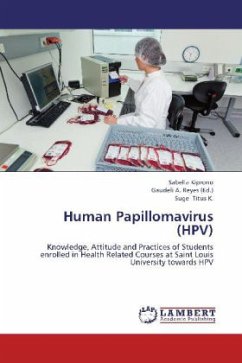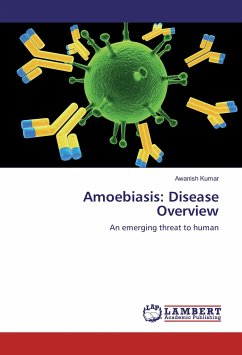
Human papillomavirus - An Overview
Cervical Cancer
Versandkostenfrei!
Versandfertig in 6-10 Tagen
36,99 €
inkl. MwSt.

PAYBACK Punkte
18 °P sammeln!
Human papillomavirus (HPV) is a highly diverse group of viruses, ubiquitous in nature, with world-wide distribution. HPV is mainly transmitted through sexual contact. There are more than 100 types of HPV, of which at least 13 are causing cancer and are also known as high-risk type. Two HPV types (16 and 18) cause 70% of cervical cancer and precancerous cervical lesions. Cervical cancer is one of the most common cancer prevalent among women. Most of the cervical cancer is caused by a virus called human papillomavirus (HPV). HPV typing is an important factor for cervical cancer diagnosis and PCR...
Human papillomavirus (HPV) is a highly diverse group of viruses, ubiquitous in nature, with world-wide distribution. HPV is mainly transmitted through sexual contact. There are more than 100 types of HPV, of which at least 13 are causing cancer and are also known as high-risk type. Two HPV types (16 and 18) cause 70% of cervical cancer and precancerous cervical lesions. Cervical cancer is one of the most common cancer prevalent among women. Most of the cervical cancer is caused by a virus called human papillomavirus (HPV). HPV typing is an important factor for cervical cancer diagnosis and PCR & PFLP methods are used for diction of HPV types.












